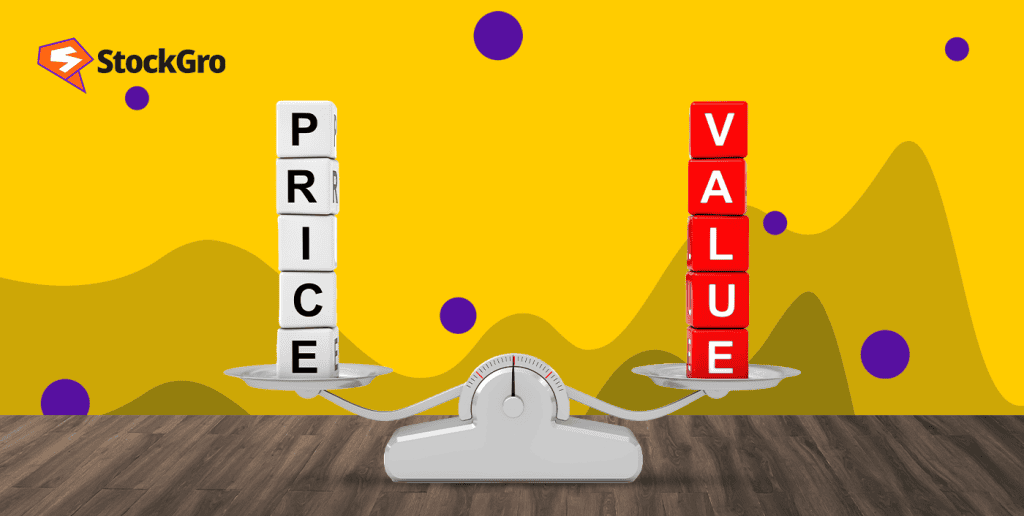
Ever wondered what your stocks or mutual funds are truly worth? Fair market value (FMV) answers that question. It reflects the price an investor would willingly pay in an open market. Your approach to investing may change once you realise this. Explore more about fair market value meaning in the blog.
What is fair market value?
The price represents what an asset is worth in an open transaction. It’s the value a buyer and seller agree upon, free from any external pressure or obligation. Both must have sufficient information to make an informed decision.
This concept holds significant weight in finance, law, and taxation. It provides a benchmark for what a particular investment, property, or security is actually worth. Whether evaluating real estate, stocks, or even charitable donations, FMV ensures the valuation is as close to reality as possible, protecting both parties involved.
What is fair market value in the Income Tax Act? U/s 2(22B) FMV is described as the expected amount an asset would bring in if exchanged under normal conditions. When this value can’t be directly assessed, alternative methods are applied to estimate it, ensuring precision.
You may also like: The fair value method of asset valuation
Difference between fair value and market value
Fair value Vs market value– are often confused, but they refer to different concepts. Fair value is an estimate based on detailed factors, such as market conditions and financial analysis. It’s a calculated reflection of what something should be worth.
Market value is simply what people are currently paying. It’s driven by the immediate demand and supply. This doesn’t always show the asset’s true worth, only what it’s trading for right now.
Market value can fluctuate quickly due to short-term events. Fair value tends to be steadier since it relies on a deeper understanding of underlying factors. While the price of a stock can jump up and down during the day, fair value looks at the longer-term fundamentals of the investment.
Finding fair value requires more research and analysis. You need to dig into financial reports and economic data. Market value, on the other hand, is easy to see—it’s just the going rate in the market. Both have their importance, but they provide different perspectives on the worth of an investment.
Also read: The market value effect – how can it make or break your investments?
Methods to determine fair market value
Determining fair value is not just guesswork. It’s about figuring out what something is truly worth, on a data basis. Various approaches can be used, depending on what you’re valuing. Here are a few approaches to determine FMV.
- Market comparison
This method looks at recent sales of similar items. If a stock or property was recently sold, you check how much similar ones went for. It’s straightforward and based on actual transaction figures. For example, two assets in the same avenue selling at ₹50 lakh and ₹52 lakh can help estimate the price of a third one. - Income-based calculation
This approach is future-focused. It considers how much money the item will generate in the coming years. For stocks or mutual funds, it looks at future profits and converts those expected earnings into today’s value. It’s especially helpful when planning for long-term investments. - Replacement cost
Here, you estimate what it would cost to rebuild or replace the item. This method is typically used for physical properties like houses or machinery. You calculate how much it would cost today to create something similar and factor in depreciation. - Blended approach
Sometimes, one method alone doesn’t give a full picture. That’s where this approach comes in. It combines elements from multiple valuation techniques, like market trends, income potential, and replacement costs, to provide a more accurate estimate.
Also Read: Calculating company valuations. Everything there is to know
FMV in stocks & mutual funds
Stocks
Fair market value of shares reflects what a stock would fetch under normal market conditions. It’s typically based on the average trading price for a given day. This value represents what buyers are willing to pay and what sellers expect. However, market prices can sometimes be misleading, influenced by sudden news or market trends. That’s why FMV can offer a more reliable gauge.
Say a share is trading at ₹2K, but it’s fair value is estimated at ₹1.5K. This could indicate the stock is overpriced. And if the trading price is below the stock market fair value, it might signal a good buying opportunity. But always pair FMV with other factors like a company’s financial health and market conditions.
Mutual funds
When it comes to mutual funds, FMV is closely tied to the Net Asset Value or the NAV.
It is the value of a single mutual fund unit, determined at the close of each trading day. It’s determined by:
(Total Assets – (Liabilities – Expenses)) ÷ No. of outstanding units
NAV is typically used by investors to determine the price at which to purchase & sell fund units. Unlike stocks– where prices change throughout the day– NAV remains fixed until the next day.
You can monitor your mutual fund’s performance by examining variations in NAV over time. Suppose, say you bought at ₹80 & the value goes to ₹190, your investment has grown.
But NAV isn’t the sole variable to take into account. When making judgements, other elements including the fund’s investing strategy, past performance etc. are crucial.
Bottomline
Fair market value can be a valuable tool for making sound investment choices. It helps you understand whether an asset is fairly priced or not. But remember, FMV alone isn’t enough. For shares, look at the overall market, company growth, and earnings. For mutual funds, assess the fund’s goals, past results & other factors.
FMV can cut through market noise and hype. It helps you know when it’s the right time to buy or sell. But always think about the bigger picture and don’t rush into any decisions without proper analysis.
FAQs
- What is the fair market value as per Income Tax Act?
According to Section 2(22B) FMV is the amount an asset would attract if exchanged in an open environment. Both parties must be informed and willing participants. No one should feel pressured into the transaction. If the asset’s trading figure isn’t clear, other ways can be applied to estimate it.
- What is the formula of FMV?
There isn’t just one formula for fair market value (FMV). It depends on the method used. For stocks, FMV can be the average trading price. For mutual funds, it’s based on net asset value (NAV). In real estate, FMV can be estimated by comparing similar properties. The formula changes with the type of asset.
- How is fair value calculated?
Fair value is calculated by analysing several factors. For stocks, it may involve looking at future earnings or dividends. For assets like property, it’s about comparing similar sales in the area. Sometimes, it’s the cost of replacing the item, minus depreciation. Each type of asset uses a different approach to find its fair value.
- What is the fair market value of stock?
The FMV of a share is what it would trade for in a normal market setting. It reflects the amount buyers would pay and sellers would agree to. This value is usually determined by the stock’s average trading figure on a given day. It shows the stock’s actual worth at that time, free from external pressure.
- Is fair market value the same as market value?
FMV and market price aren’t the same. Fair market value is what an asset should be worth in a balanced setting, where neither party is pressured. Market price is the actual figure at which it’s currently traded, often influenced by demand or short-term trends. Market price changes more often, while fair market value stays more consistent.

